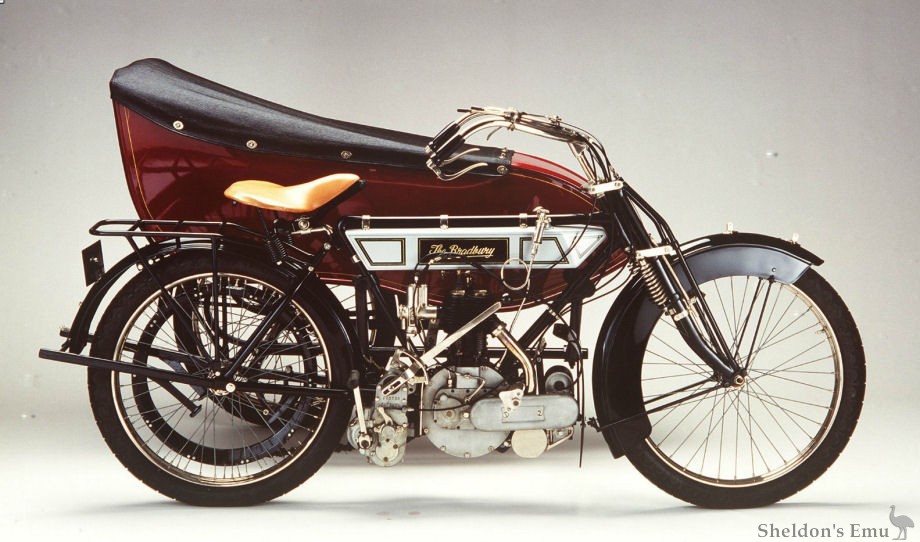


The first motorcycles carried the name Peerless and were powered by a Belgian Minerva engine (as were most contemporary motorcycles). In 1904 the company began making its own engines which featured automatic outlet valves and coil ignition. They called their new machine the Bradbury. By 1914 a range of motorcycles were offered including twin cylinder machines.
During the First World War the company worked on producing munitions and after the war did little to develop their motorcycles. In May 1924, following a reduction in demand and increasing competition, production of the Bradbury ceased.
The museum's Bradbury is an early sidecar model. The sidecar meant that the family man could transport his wife and children. It was smaller and cheaper than a small car and was the recognised holiday transport for thousands of the more prosperous working people. Sidecars generally declined in use after the 1920s, when women were socially permitted to ride astride on the main seat.
Prior to World War I Bradbury motor cycles (many with side cars) participated in many hill climb and endurance races, including the Australian Great Road Race from Sydney to Melbourne, the London to Lands End Trial (completing 886 miles (1426km) in 38 hours 47 minutes and reducing the existing record by 2 hours), and the Transvaal Speed Championship.
Text and image courtesy Powerhouse Museum, Sydney